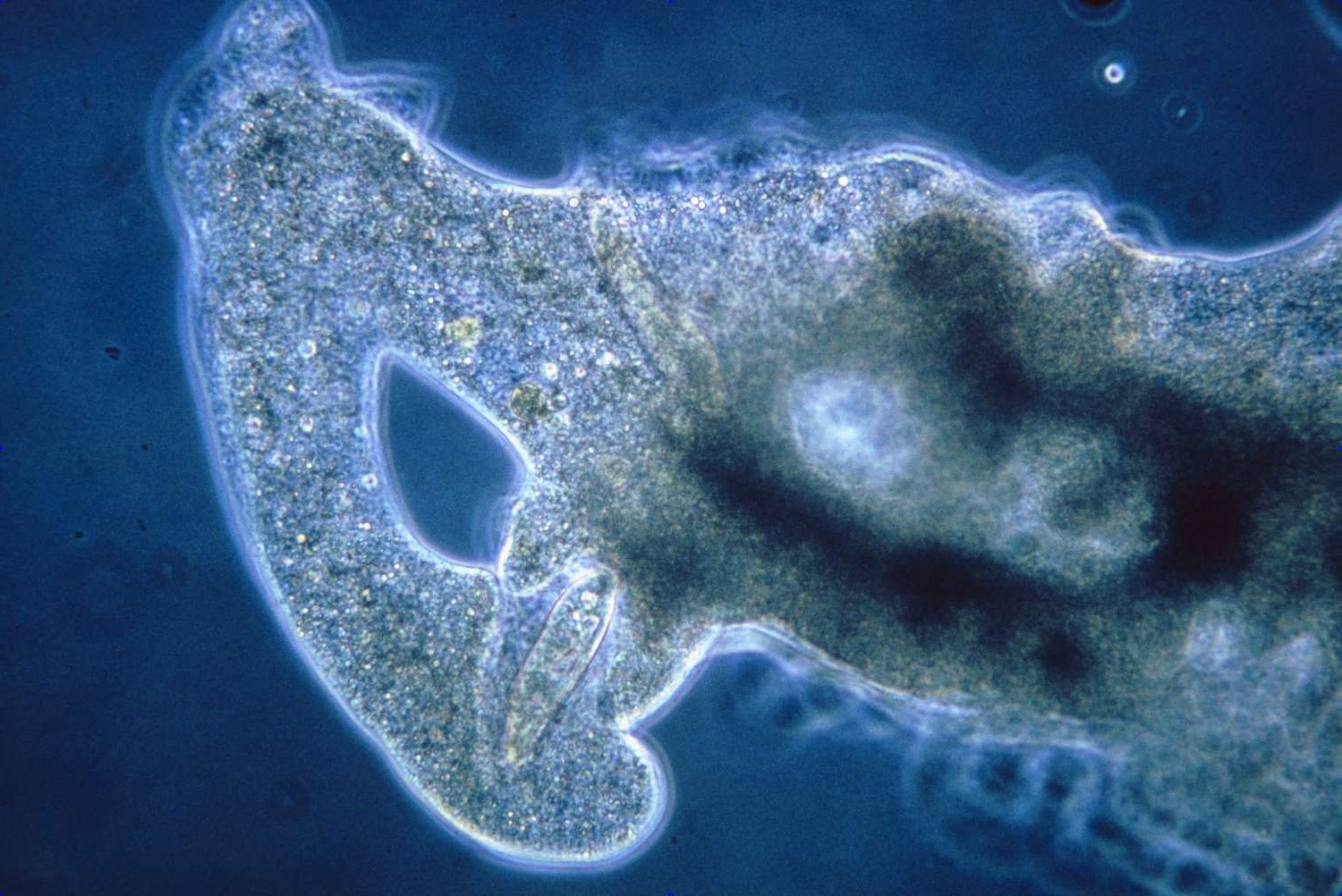
Ever wondered what makes amoebas so fascinating? These tiny, single-celled organisms are more than just blobs under a microscope. Amoebas can change shape, move, and even hunt for food in ways that might surprise you. Found in water, soil, and even inside other creatures, they play a crucial role in ecosystems. Some amoebas are harmless, while others can cause serious diseases. Did you know that amoebas can reproduce by simply splitting in two? Or that they use pseudopodia, or "false feet," to move and capture prey? Dive into these 32 amazing amoeba facts and get ready to see the microscopic world in a whole new light!
What is an Amoeba?
Amoebas are fascinating single-celled organisms found in various environments. They move and feed using pseudopodia, which are temporary projections of their cell body. Here are some amazing facts about these tiny creatures.
- Amoebas belong to the kingdom Protista, a diverse group of eukaryotic microorganisms.
- They can be found in freshwater, saltwater, soil, and even inside other organisms.
- The name "amoeba" comes from the Greek word "amoibe," meaning change, due to their shape-shifting abilities.
- Amoebas reproduce asexually through a process called binary fission, where one cell splits into two identical cells.
- Some amoebas can form cysts to survive harsh conditions, such as extreme temperatures or lack of food.
- They have a flexible cell membrane, allowing them to change shape and move in any direction.
- Amoebas use their pseudopodia to engulf food particles, a process known as phagocytosis.
- They primarily feed on bacteria, algae, and other small organisms.
- Amoebas have a contractile vacuole that helps regulate their water balance by expelling excess water from the cell.
- Some species of amoebas can cause diseases in humans, such as Entamoeba histolytica, which causes amoebic dysentery.
Amoeba Anatomy and Physiology
Understanding the structure and function of amoebas can provide insight into their unique adaptations and survival strategies.
- Amoebas have a nucleus that contains their genetic material and controls cell activities.
- The cytoplasm of an amoeba is divided into two parts: the outer ectoplasm and the inner endoplasm.
- The ectoplasm is clear and gel-like, while the endoplasm is more fluid and contains organelles.
- Amoebas have mitochondria, which produce energy for the cell through cellular respiration.
- They also have ribosomes, which are responsible for protein synthesis.
- The cell membrane of an amoeba is semi-permeable, allowing selective movement of substances in and out of the cell.
- Amoebas can detect and respond to chemical signals in their environment, a process called chemotaxis.
- They can also sense light and move away from it, a behavior known as negative phototaxis.
- Some amoebas have symbiotic relationships with other organisms, such as algae, which provide them with nutrients through photosynthesis.
Interesting Behaviors of Amoebas
Amoebas exhibit a variety of behaviors that help them survive and thrive in their environments.
- Amoebas can form temporary cell-to-cell connections called plasmodesmata to exchange nutrients and genetic material.
- They can also form multicellular aggregates called pseudoplasmodia when food is scarce, working together to find new food sources.
- Amoebas can detect and avoid harmful substances, such as toxins or predators, by changing their direction of movement.
- Some species of amoebas can produce toxins to defend themselves against predators or competitors.
- Amoebas can also form symbiotic relationships with bacteria, which help them digest food more efficiently.
- They can communicate with each other using chemical signals, coordinating their movements and behaviors.
- Amoebas can adapt to changing environmental conditions by altering their metabolism and gene expression.
Amoebas in Research and Medicine
Amoebas have played a significant role in scientific research and have potential applications in medicine.
- Amoebas have been used as model organisms in cell biology research due to their simple structure and ease of manipulation.
- They have helped scientists understand fundamental processes such as cell division, movement, and signaling.
- Amoebas have also been used to study the evolution of eukaryotic cells and the origins of multicellularity.
- Researchers are exploring the potential of amoebas as bioindicators for monitoring environmental pollution and water quality.
- Amoebas have been used in drug discovery and development, particularly for identifying new antibiotics and anti-parasitic compounds.
- Some amoebas have been genetically engineered to produce therapeutic proteins, such as insulin, for medical use.
The Fascinating World of Amoebas
Amoebas, those tiny, single-celled organisms, pack a punch when it comes to intrigue. From their unique way of moving using pseudopodia to their ability to engulf food through phagocytosis, these microscopic creatures are nothing short of fascinating. They thrive in diverse environments, from freshwater to the human body, showcasing their adaptability. Amoebas also play a crucial role in ecosystems, helping to decompose organic material and recycle nutrients. Their simple structure belies their complexity and importance in the natural world. Whether you're a budding biologist or just curious about the microscopic world, amoebas offer a glimpse into the wonders of life at its smallest scale. So next time you think about the tiniest forms of life, remember the mighty amoeba and its incredible contributions to our planet.
Was this page helpful?
Our commitment to delivering trustworthy and engaging content is at the heart of what we do. Each fact on our site is contributed by real users like you, bringing a wealth of diverse insights and information. To ensure the highest standards of accuracy and reliability, our dedicated editors meticulously review each submission. This process guarantees that the facts we share are not only fascinating but also credible. Trust in our commitment to quality and authenticity as you explore and learn with us.


